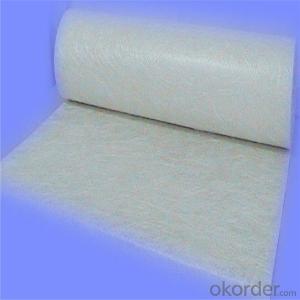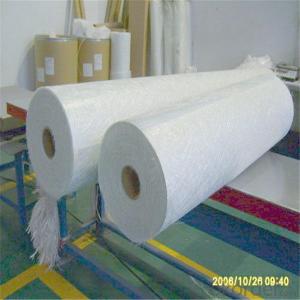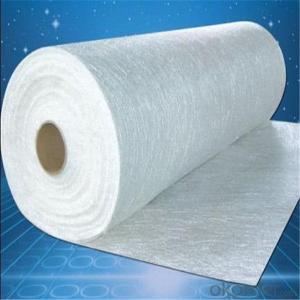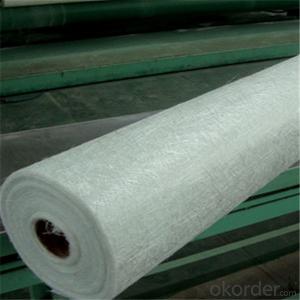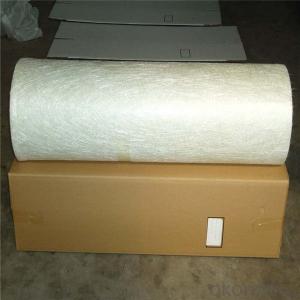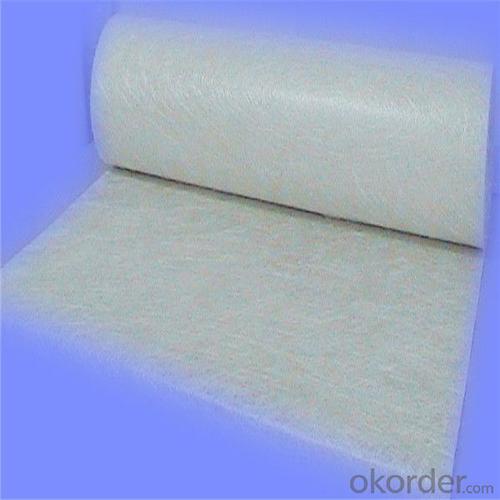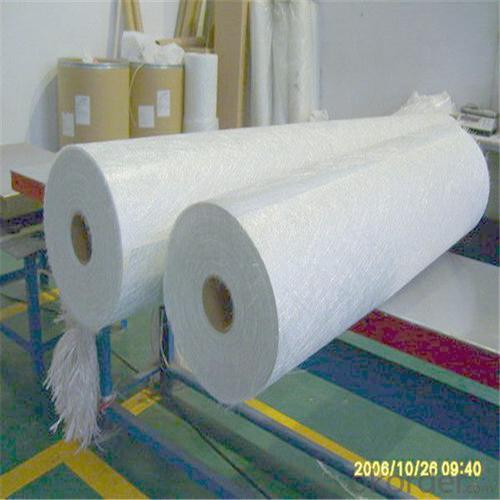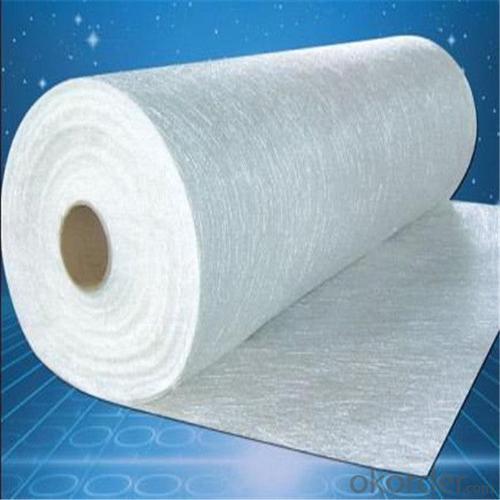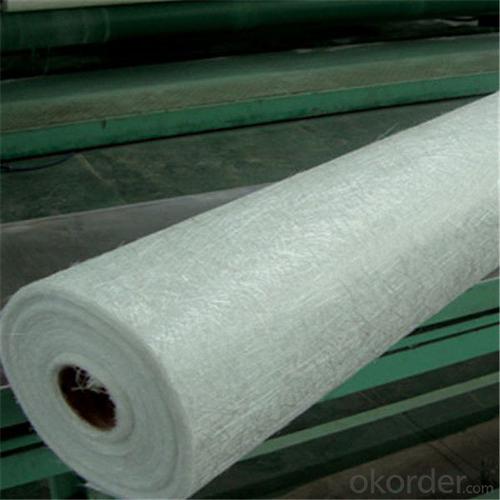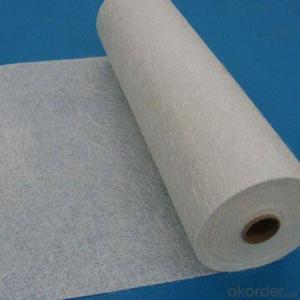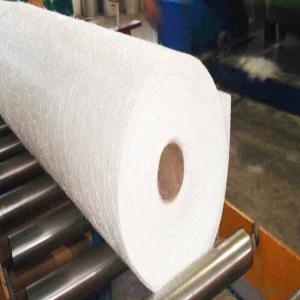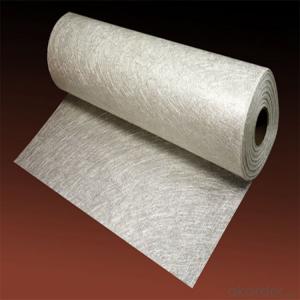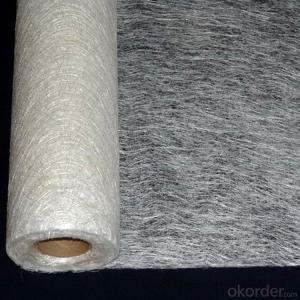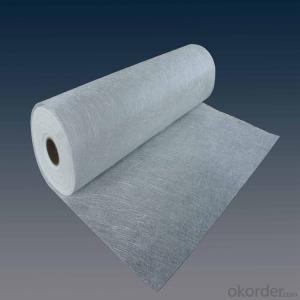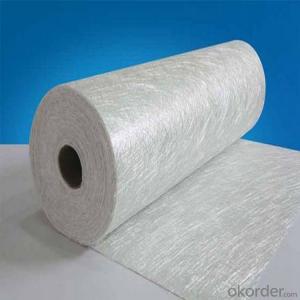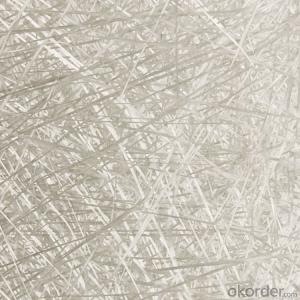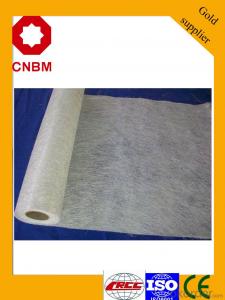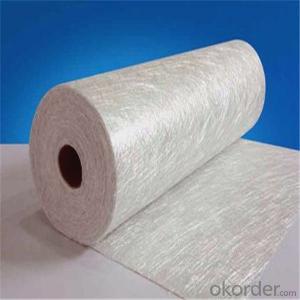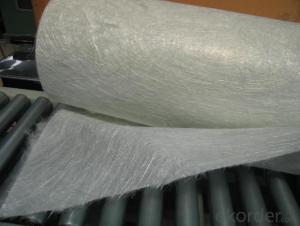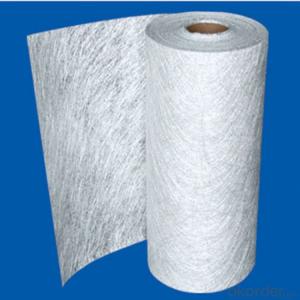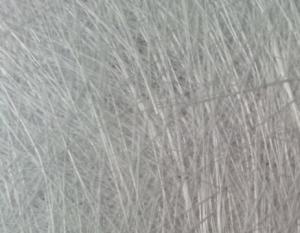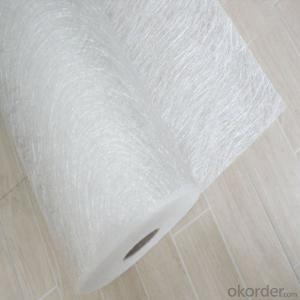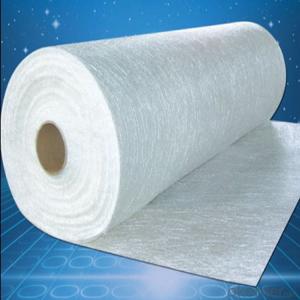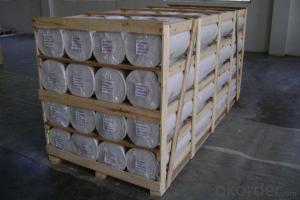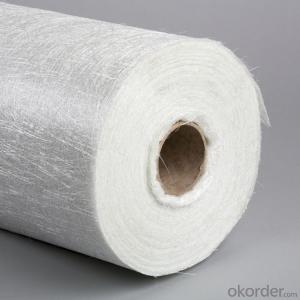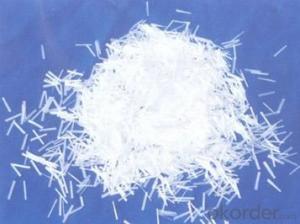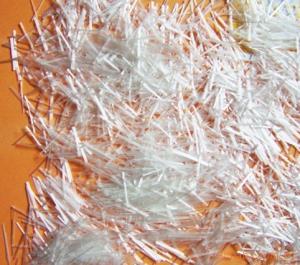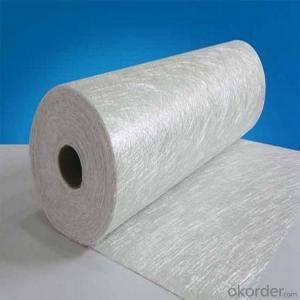Fiberglass Chopped Strand Mat 450 G/M2 - 2024 e-glass powder chopped stand mats
- Loading Port:
- Tianjin
- Payment Terms:
- TT OR LC
- Min Order Qty:
- 100 m.t.
- Supply Capability:
- 20000 m.t./month
OKorder Service Pledge
Quality Product, Order Online Tracking, Timely Delivery
OKorder Financial Service
Credit Rating, Credit Services, Credit Purchasing
You Might Also Like
Quick Details
| Technique: | Chopped Strand Fiberglass Mat (CSM) | Dimensions: | 450gsm | Mat Type: | Continuous Filament Mat |
| Fiberglass Type: | E-Glass | Softness: | softness | Place of Origin: | Jiangxi, China (Mainland) |
| Brand Name: | cnbm | Model Number: | 450gsm | color: | white |
| fiberglass type: | E glass | product: | e-glass powder chopped stand mats | binder: | powder or emulsion |
| width: | 1040 or 1270mm, as your requirement | weight: | 30 or 45kg/roll | paper tube diameter: | 90mm |
| outer diameter of roll: | 256mm | packing: | plastic film+carton box + pallet |
Packaging & Delivery
| Packaging Details: | plastic film+carton box + pallet |
| Delivery Detail: | 15-20days |
Specifications
1.e-glass powder chopped stand mats
2.binder:power or emulsion
3.width:1040mm or 1270mm
4.weight:450gsm
Picture
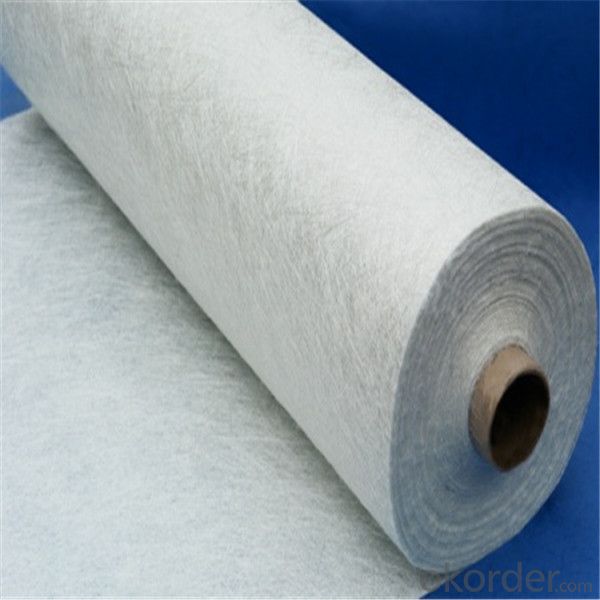
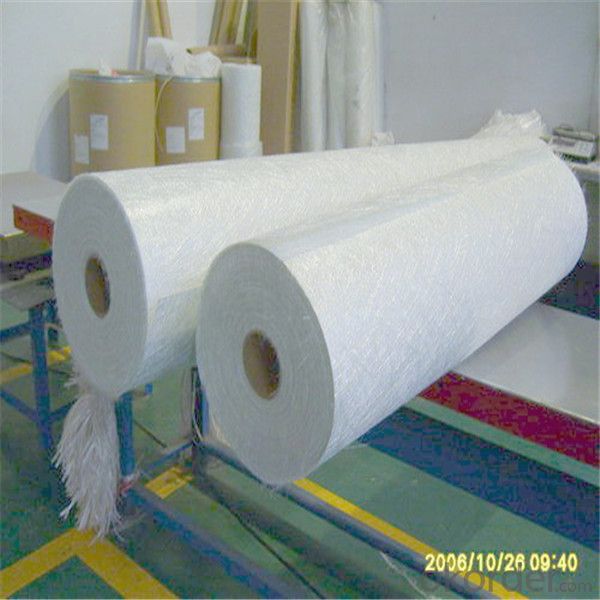

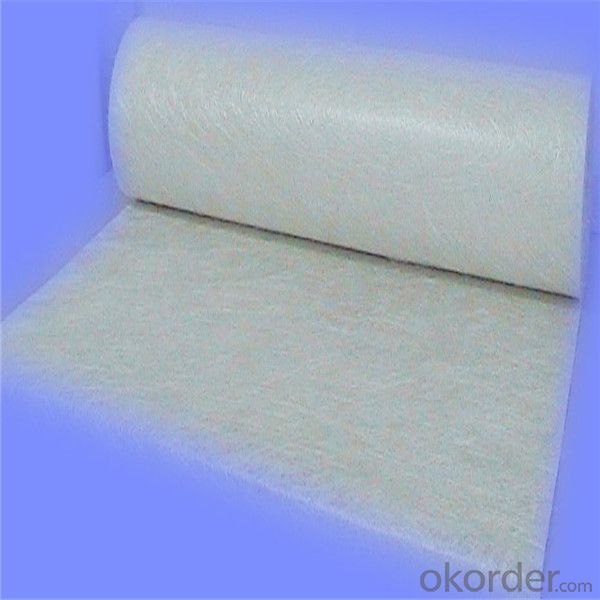
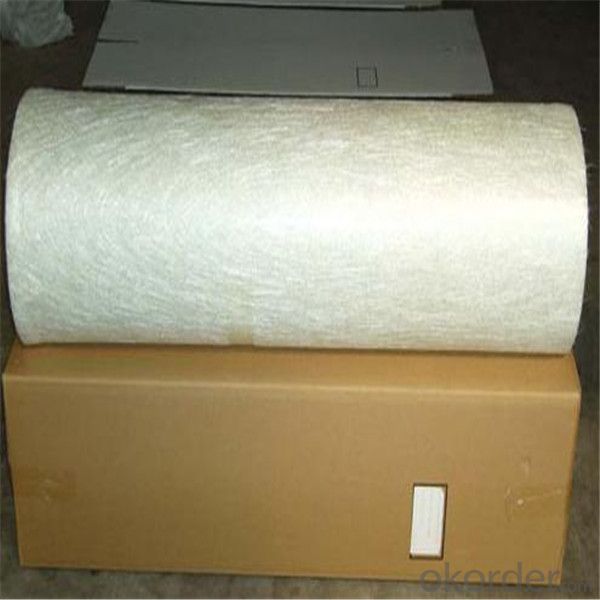
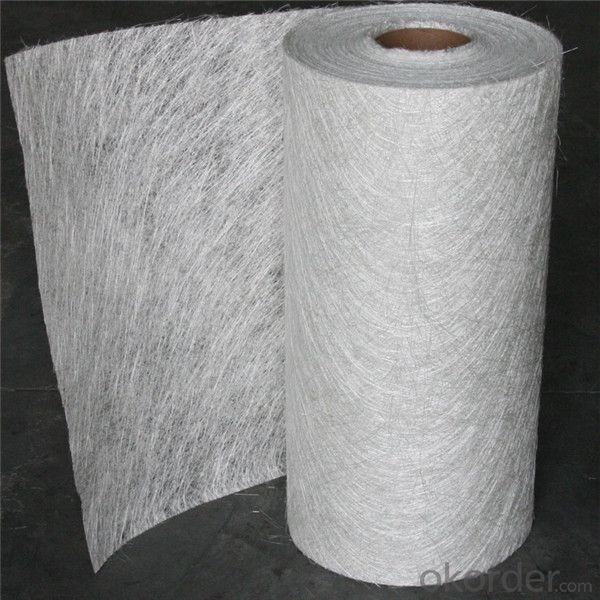
- Q: Can fiberglass chopped strand be used in composite materials?
- Yes, fiberglass chopped strand can be used in composite materials. Chopped strand is commonly used as a reinforcement in composite materials to enhance their strength and durability.
- Q: Is fiberglass chopped strand suitable for automotive applications?
- Yes, fiberglass chopped strand is suitable for automotive applications. It is commonly used in automotive parts such as body panels, hoods, and interior components due to its high strength, lightweight, and corrosion-resistant properties. Additionally, it provides excellent impact resistance and can be easily molded into complex shapes, making it an ideal material for automotive applications.
- Q: Can fiberglass chopped strand be used in the production of electrical cables?
- Yes, fiberglass chopped strand can be used in the production of electrical cables. Fiberglass is known for its excellent electrical insulation properties, making it a suitable material for cables. The chopped strands of fiberglass can be incorporated into the cable insulation to enhance its electrical insulation capabilities. Additionally, fiberglass is also resistant to heat, chemicals, and moisture, which further contributes to its suitability for electrical cable production.
- Q: How does the fiber volume fraction affect the properties of fiberglass chopped strand?
- The fiber volume fraction of fiberglass chopped strand refers to the ratio of the volume of fibers to the total volume of the composite material. Increasing the fiber volume fraction typically leads to improved mechanical properties such as strength, stiffness, and impact resistance. This is because a higher fiber content allows for better load transfer and distribution throughout the material. Additionally, a higher fiber volume fraction can enhance the dimensional stability and thermal conductivity of the fiberglass chopped strand.
- Q: Can fiberglass chopped strand be used in the production of building facades?
- Building facades can utilize fiberglass chopped strand, a reinforcement material commonly employed in construction. This material consists of small, randomly chopped fiberglass strands. When combined with resins or cement, it forms a robust and durable composite material. In the production of building facades, fiberglass chopped strand can be integrated into various components like panels, sheets, or cladding. This incorporation enhances the facade's strength and resistance against impact, weathering, and external factors. Moreover, it improves the structure's fire resistance and thermal insulation properties. Fiberglass chopped strand is lightweight, facilitating easy handling and installation during construction. It can be effortlessly molded into different shapes and sizes, allowing for design flexibility. Additionally, it boasts excellent corrosion resistance, ensuring the facade remains visually appealing and intact for an extended period. Overall, the utilization of fiberglass chopped strand in building facades offers numerous advantages, including enhanced strength, durability, fire resistance, thermal insulation, and design flexibility. It represents a cost-effective and reliable solution that contributes to the longevity and performance of the facade.
- Q: What are the typical manufacturing processes for fiberglass chopped strand composites?
- The manufacturing of fiberglass chopped strand composites involves a series of essential steps. To begin with, the raw materials, which consist of chopped fiberglass strands and a resin matrix, are readied. The chopped fiberglass strands are typically made by cutting continuous glass fibers into shorter lengths, usually ranging from 0.5 to 3 inches. Following this, the resin matrix, typically a thermosetting material like polyester, vinyl ester, or epoxy, is mixed with various additives and catalysts to improve its mechanical properties and curing characteristics. The ratio of resin to chopped fiberglass strands is determined based on the desired strength and performance of the final composite. After the preparation of the raw materials, they are combined through a process known as impregnation. This involves thoroughly coating the chopped fiberglass strands with the resin matrix to ensure saturation. Various techniques, such as hand lay-up, spray-up, or filament winding, can be employed to achieve this. Once impregnation is complete, the composite material is shaped according to the desired form. This can be accomplished using techniques like compression molding, injection molding, or pultrusion. Compression molding requires placing the impregnated material into a mold and applying heat and pressure to shape and cure the resin. Injection molding follows a similar process but entails injecting the resin into a closed mold under high pressure. Pultrusion, on the other hand, continuously pulls the impregnated material through a heated die to shape it into a continuous profile. After shaping, the composite is cured to ensure the hardening of the resin matrix and bonding of the chopped fiberglass strands. Curing can be achieved through heat, chemical reactions, or a combination of both, depending on the specific resin system used. The temperature and duration of curing are precisely controlled to attain the desired mechanical properties and dimensional stability. Lastly, the cured composite undergoes trimming, finishing, and quality inspection. Trimming involves the removal of any excess material or flash that may have formed during shaping and curing. Additional post-processing steps, such as sanding, painting, or coating, may be applied to further enhance the appearance and performance of the finished composite. In summary, the manufacturing processes for fiberglass chopped strand composites involve the preparation of raw materials, impregnation of the chopped fiberglass strands, shaping of the composite, curing of the resin, and finishing of the final product. These processes can be customized based on specific application requirements and desired composite properties.
- Q: Can fiberglass chopped strand be used in pipe manufacturing?
- Indeed, the utilization of fiberglass chopped strand is feasible in the production of pipes. This particular material, fiberglass chopped strand, possesses a wide range of applications, one of which is pipe manufacturing. It boasts numerous benefits, such as its exceptional strength, resistance to corrosion, and lightweight characteristics. By combining the chopped strands with resin and employing various manufacturing techniques like filament winding or pultrusion, it becomes possible to shape the material into a pipe form. Consequently, the resulting fiberglass pipe exhibits outstanding mechanical properties, including remarkable tensile strength and stiffness, as well as resistance to both chemicals and extreme temperatures. Furthermore, fiberglass pipes are renowned for their durability and minimal maintenance requirements, making them a favored choice in industries such as oil and gas, chemical processing, and wastewater treatment.
- Q: How does the length of chopped strand affect its performance?
- The performance of chopped strand can be significantly influenced by its length. Chopped strand refers to the use of short lengths of fiberglass or other reinforcing fibers in composites, typically to enhance strength and stiffness. Various key properties of the composite material are affected by the length of chopped strand. First and foremost, longer strands generally yield higher tensile strength. This is because longer strands offer a greater continuous fiber reinforcement throughout the composite, resulting in improved load-bearing capabilities. On the contrary, shorter strands may struggle to distribute stress effectively, leading to lower strength. Furthermore, the stiffness of the composite is impacted by the length of chopped strand. Longer strands provide greater resistance to deformation, resulting in a stiffer material. This can be advantageous in applications that prioritize rigidity, such as structural components. Conversely, shorter strands may contribute to a more flexible composite, which can be beneficial in applications requiring impact resistance or flexibility. Additionally, the processability of the composite material is influenced by the length of chopped strand. Generally, shorter strands are easier to mix and distribute evenly throughout the matrix, thereby improving the overall homogeneity of the composite. On the other hand, longer strands may necessitate more attention during processing to ensure proper dispersion and alignment. To summarize, the length of chopped strand directly affects the performance of composites. Longer strands generally offer higher tensile strength and stiffness, while shorter strands can enhance processability and flexibility. The selection of the appropriate chopped strand length depends on the specific requirements of the application, considering factors such as strength, stiffness, processability, and desired physical properties.
- Q: How does fiberglass chopped strand enhance the strength of composites?
- Fiberglass chopped strand is commonly utilized in the production of composites to enhance their strength. It accomplishes this through various mechanisms. To begin with, the composite material benefits from the tensile strength provided by the randomly dispersed strands. These strands function as individual fibers that effectively resist stretching and pulling forces. Consequently, the stress is evenly distributed throughout the composite, preventing concentration in a single area and subsequent material failure. Furthermore, the high aspect ratio of the fiberglass chopped strand contributes to the composite's stiffness. The long, thin strands create a substantial surface area for bonding with the matrix material. This facilitates the transfer of load between the matrix and reinforcement, resulting in increased stiffness and dimensional stability of the composite. Moreover, the random orientation of the fiberglass chopped strand within the matrix creates an interlocking effect, bolstering the composite's impact resistance. This three-dimensional network aids in absorbing and dissipating energy upon impact, preventing cracks or fractures from propagating through the material. Consequently, the overall toughness and durability of the composite are improved. Additionally, fiberglass chopped strand plays a significant role in enhancing the fatigue resistance of composites. By acting as barriers to the growth of microcracks, the fibers prevent their propagation and the subsequent occurrence of catastrophic failures. This property is particularly valuable in applications where cyclic loading or vibrations are prevalent. In conclusion, fiberglass chopped strand enhances the strength of composites through its provision of tensile strength, improvement of stiffness, enhancement of impact resistance, and increase in fatigue resistance. These properties render it a valuable reinforcing material in various industries, including automotive, aerospace, construction, and marine.
- Q: Can fiberglass chopped strand be used in chemical resistant applications?
- Yes, fiberglass chopped strand can be used in chemical resistant applications. The combination of fiberglass and resin offers good resistance to a wide range of chemicals, making it suitable for various industrial and commercial applications where chemical resistance is required.
Send your message to us
Fiberglass Chopped Strand Mat 450 G/M2 - 2024 e-glass powder chopped stand mats
- Loading Port:
- Tianjin
- Payment Terms:
- TT OR LC
- Min Order Qty:
- 100 m.t.
- Supply Capability:
- 20000 m.t./month
OKorder Service Pledge
Quality Product, Order Online Tracking, Timely Delivery
OKorder Financial Service
Credit Rating, Credit Services, Credit Purchasing
Similar products
Hot products
Hot Searches
Related keywords
